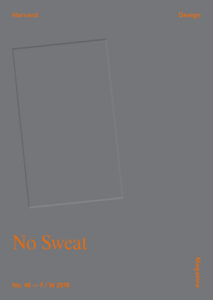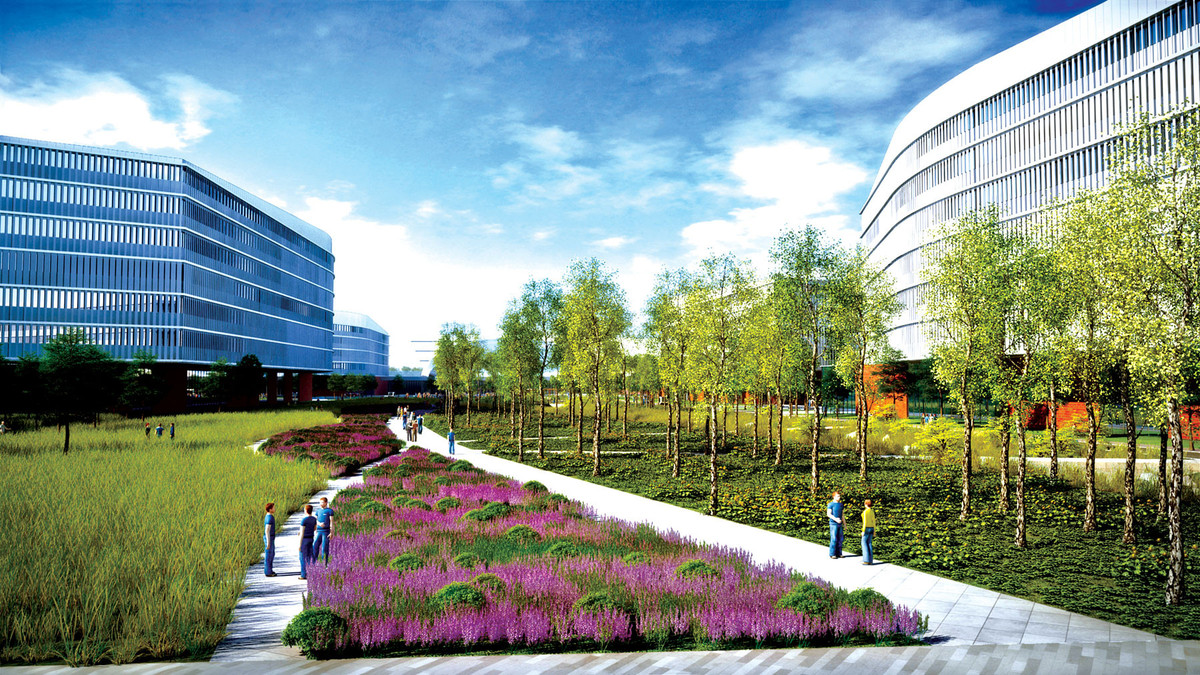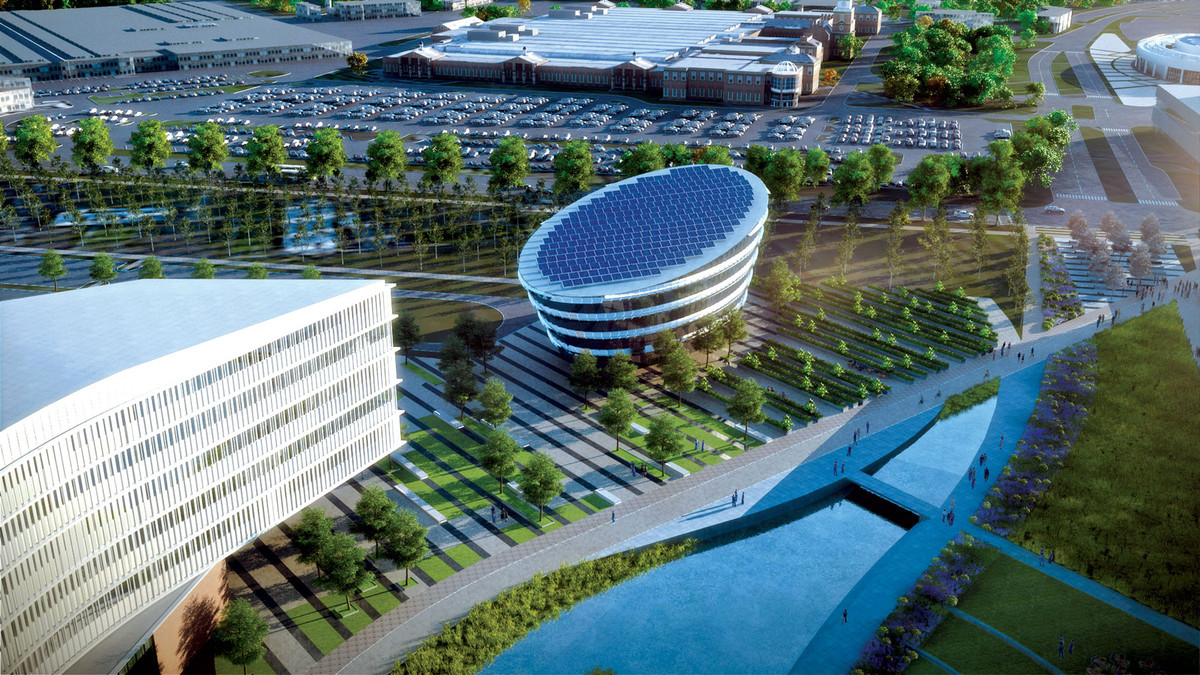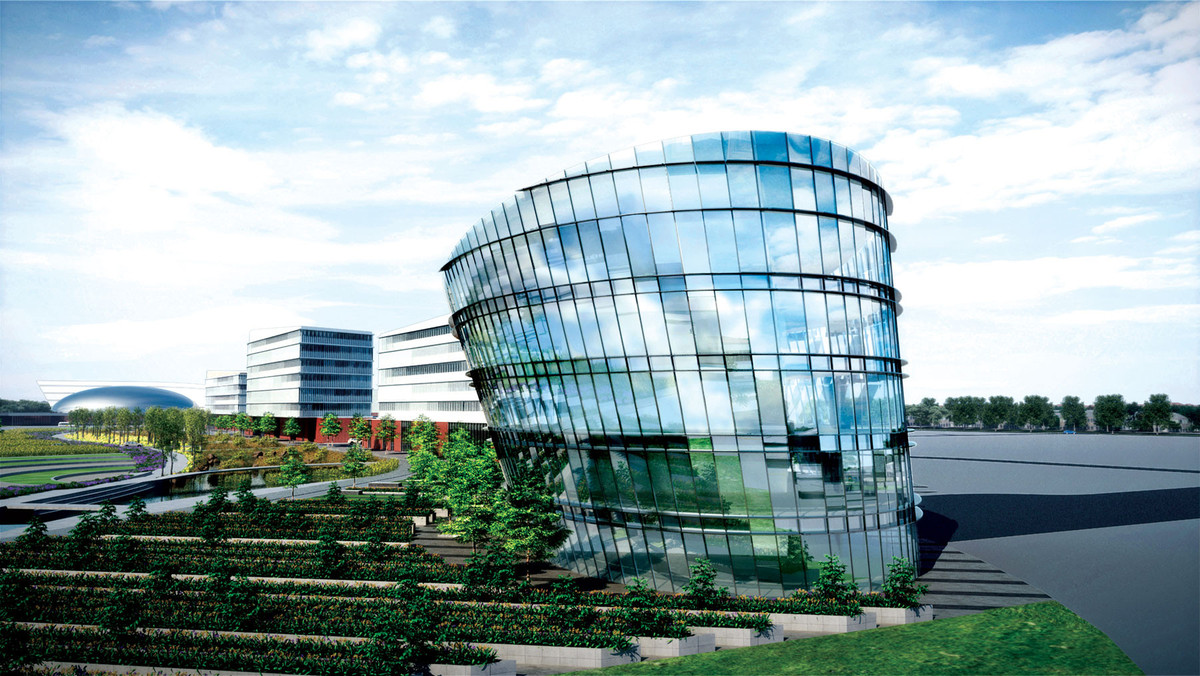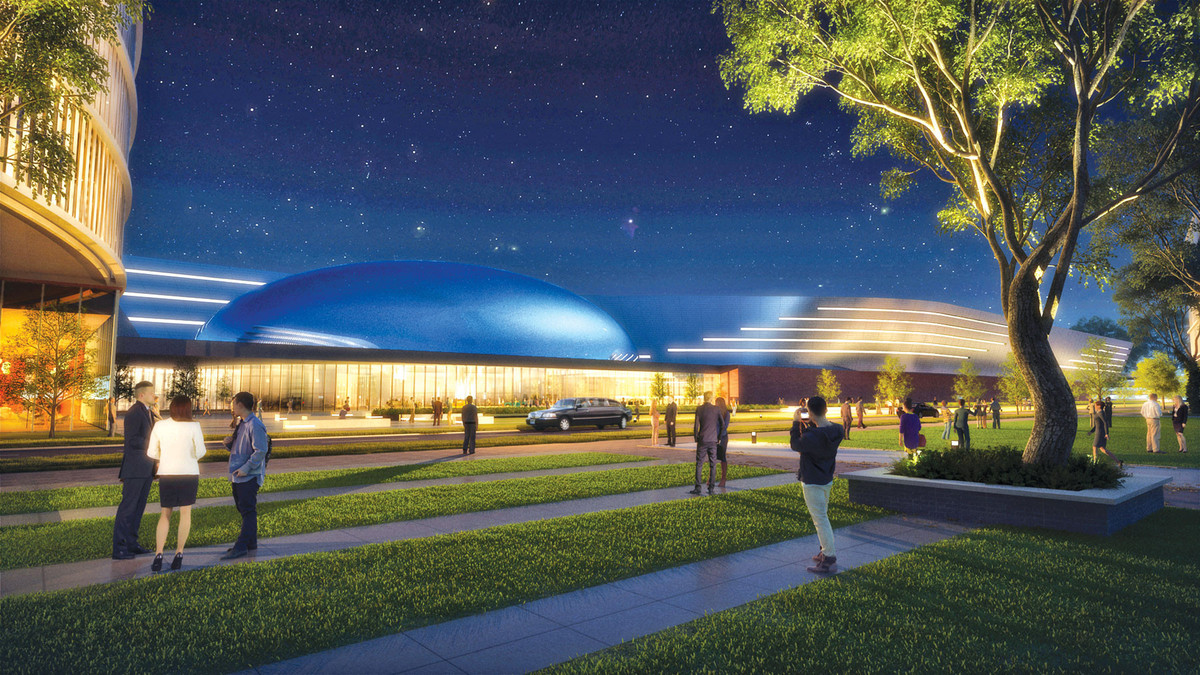Returns on the City: Detroit and the Design of Late Fordism
Fordism is said to have reached its mature phase in the decades following World War II, only to have collapsed, sometime in the early 1970s, under the combined weight of its various crises and contradictions.1 Detroit—the city in which Ford Motor Company, Chrysler, General Motors, and others had established their industries earlier in the century—did not, though, reap the fortunes of this maturation. By the middle of the century, automobile manufacturers had already begun to leave Motor City behind. Henry Ford, in particular, had tested his workers to the limits. It was impossible for them keep pace with the ever-accelerating rate of the assembly line. Efforts to unionize were opposed, sometimes in the most brutal fashion. Finally, the company pushed ahead with the decentralization and automation of its production facilities, decamping them from the city to regional hinterlands.2
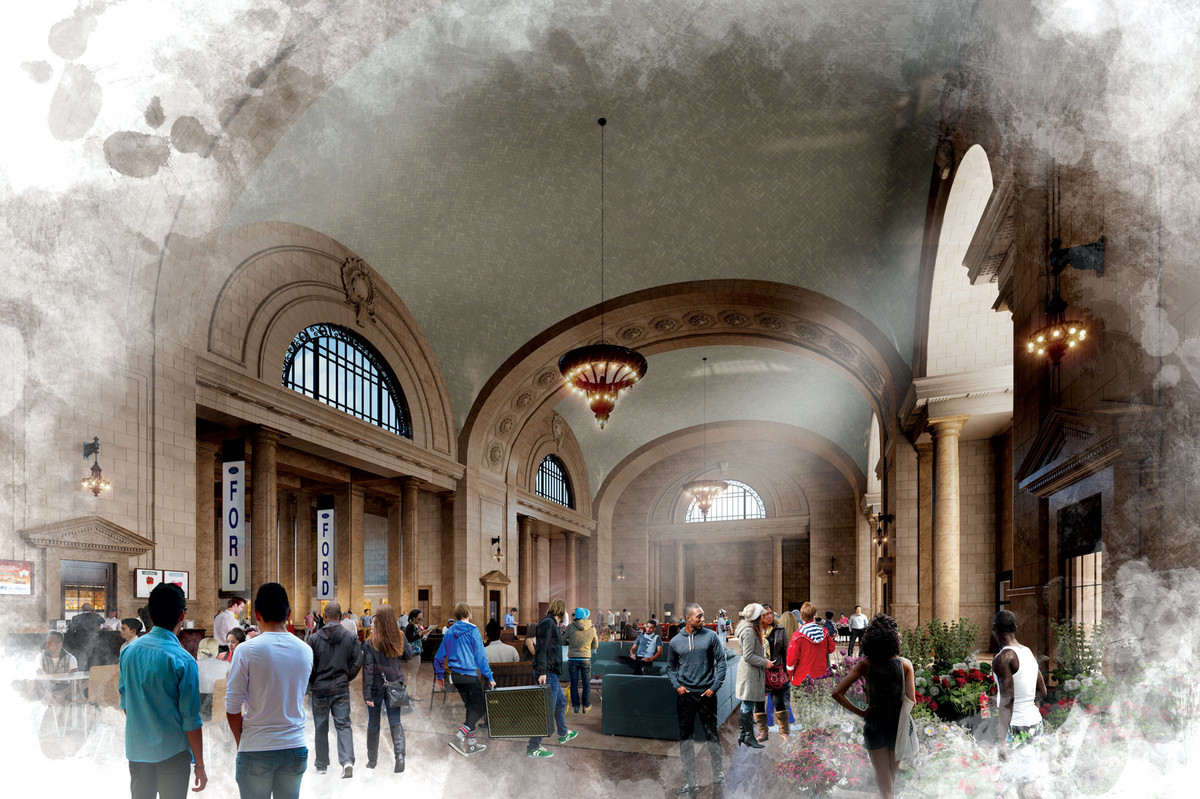
Fordism is said to have reached its mature phase in the decades following World War II, only to have collapsed, sometime in the early 1970s, under the combined weight of its various crises and contradictions.1 Detroit—the city in which Ford Motor Company, Chrysler, General Motors, and others had established their industries earlier in the century—did not, though, reap the fortunes of this maturation. By the middle of the century, automobile manufacturers had already begun to leave Motor City behind. Henry Ford, in particular, had tested his workers to the limits. It was impossible for them keep pace with the ever-accelerating rate of the assembly line. Efforts to unionize were opposed, sometimes in the most brutal fashion. Finally, the company pushed ahead with the decentralization and automation of its production facilities, decamping them from the city to regional hinterlands.2
The stakes of decentralization were clear to workers and managers alike. As historian Thomas J. Sugrue notes, “In August 1951, Ford went so far as to haul machines out of the Rouge under the cover of darkness because they feared ‘action by Ford workers to protect their jobs.’”3 The new mobility of capital—facilitated by advances in transportation and telecommunications, and fostered by the policies of the federal government—enabled companies such as Ford to expand and prosper in the postwar era, but at the expense of those unable to access such mobility for themselves. While the rapid population decline of Detroit in this period is often noted, less so is the fact that Detroit’s African American citizens were especially disadvantaged in the wake of the city’s industrial evacuation, just as during the Depression. “Persistent racial discrimination,” writes Sugrue, “magnified the effects of deindustrialization on blacks.”4 “As Detroit’s population shrank,” he writes, “it also grew poorer and blacker. Increasingly, the city became the home for the dispossessed.”5 We can hardly be unaware, in our own supposedly “post-Fordist” times, of how our cities remain at the mercy of the mobility of capital, or of how the consequences of these arrangements exacerbate existing inequalities.
Today, the lures of corporate investment are baited with promises of jobs and revitalized urban economies. Cities, in turn, compete with one another for such offerings—the location of a corporate campus, headquarters, or a manufacturing facility—advancing promises of easy terms and flexibilized workforces. In such circumstances, corporate investment in the city acquires the status of an act of benefaction, rather than one of, say, opportunism or exploitation. The recently announced return of Ford to Detroit is a case in point.
The long-standing crisis of Detroit’s urban economy culminated, in 2013, when the city filed for bankruptcy to the tune of an estimated amount of $18 to 20 billion. Despite the subsequent, and questionable, talking up of its recovery, the city’s economic prospects suffered a further blow in January 2018, when Amazon turned down its tax-incentivized bid to locate the company’s second headquarters, alongside 30,000 new jobs, in Detroit. Into this fraught urban scenario, the much-trumpeted return of Ford, announced in June 2018, appears endowed with something of the salvational. “We are planting a special piece of our company’s future in one of the city’s great neighborhoods, because we believe in Detroit, its people and what we can build together,” announced Bill Ford Jr., the company’s executive chair and the great-grandson of Henry Ford, at the event staged to publicize Ford’s purchase of Detroit’s long-abandoned Michigan Central Station as the hub for its revived Corktown campus.6 Here, in a building latterly renowned as iconic of the city’s much-aestheticized urban decay, Ford Jr. declared, “Detroit is open for business—for good.”7 The terms under which Ford Motor Company intends to make a return on this investment are shaped and envisioned through its architecture. The analysis of this, in turn, affords an opportunity to revisit and rethink the periodizing designations “Fordism” and “post-Fordism,” as subscribed to in architectural history and theory.
Reimagining Detroit
For the design of its corporate campuses in Dearborn and Corktown, as well as the redesign of Michigan Central Station as their “anchor” building, Ford has employed the services of Snøhetta. The practice, with its track record of forging publicly accessible spaces from the landscaping of architectural form, seems a logical choice. The firm’s founding partner Craig Dykers spoke of his practice’s work for Ford: “We don’t just design a building for you to look at; we create new pathways, new walkways, new landscapes, new gathering places in and around the building that we also have to create.”8 Snøhetta’s designs for Ford are currently only at a formative stage of development. It is not difficult to imagine, though, how the landscaped forms of the practice’s Oslo Opera House or the civic agenda of their recently completed Times Square reconstruction project in Manhattan might have appealed to Ford’s ambitions to reimagine and rebrand itself as a civically responsible, sustainability conscious, and (of course) innovative “mobility company.”9
This reimagining is focused on connectivity; on the making of an integrated ecology of work, business, leisure, and transportation set against a backdrop of reanimated urban life and publicly accessible park space. Begun in 2016, the Snøhetta-designed transformation of the company’s Dearborn campus and headquarters to the west of Detroit, for instance, will substantially reduce the number of existing buildings on the site. This is meant to open the fabric of the campus and “reflect Ford’s commitment to sustainability” by making space for a “central green area that will link buildings with walking trails [and] bike paths.”10 The fly-throughs present a familiar picture: architectural forms—seemingly skewed by the pull of some unseen force field—arrayed across a park space and patterned with a connective tissue of undulating pathways.
The now-standardized design tropes of the fluid and the connected, working here at the scale of the campus, also operate at that of the interior. At Dearborn, and in the converted factory buildings of the Corktown campus, office layouts are designed to facilitate productive interactions and exchanges between workers. Sight lines will be opened above lowered workstation partitions. There will be more cafés and informal drop-in spaces. Donna Inch, Chairman and CEO of Ford Land, the company’s Detroit real estate investment firm, conveys in a promotional film that the “new work spaces will give our employees the power to choose where and how they want to work”—and, as the video’s narrator intones, that Ford is committed to the creation of “work spaces that foster collaboration and spark innovation.”11
As in the Japanese “Toyotist” model, such managerial strategies are designed to build team mentalities and to elicit the production and sharing of knowledge between workers, the end goal of which is to achieve so-called continuous improvement in production. There are, however, other, and for obvious reasons unacknowledged and unpublicized, benefits to the adoption of such models. At the Zaha Hadid Architects–designed BMW Central Building in Leipzig (2005), for instance, the team-building and integrative agenda facilitated by Hadid’s architecture can also be seen as easing tensions between managers and managed at BMW, particularly those caused by the conditions of precarious and flexibilized labor endured by the latter.12
The proposed refurbishment of Michigan Central Station might be seen in a similar light, here smoothing over long-standing antagonisms between Ford and the city of Detroit. Remodeled as a mixed-use development that houses the company’s offices and research center on its upper levels, the station features a beaux arts ticket hall envisaged as a Main Street–themed pedestrian promenade. Reanimated by the footfall of visitors attracted to its new shops and restaurants, the civic life once accommodated in this now-derelict space appears to have been rescued by Ford, generously hosting the public within the space of the corporate. Liberally populated with figures of diversity, the renderings of Detroit’s positive transformation under Ford effectively gloss over the impact of its historical dereliction and discriminatory practices in Detroit. Ford’s promotional apparatus proclaims, “just like they did over a hundred years ago, Ford and Detroit will look forward together.”13 What occurred in the interim, however, is passed over in silence.
Ford has staged other returns to Detroit. In the 1970s, Henry Ford II commissioned the Renaissance Center for the city. Here, Ford Motor Company invested in finance and spectacle, in the form of the late modernist architecture of John Portman’s mirror-faced skyscrapers clustered into an island fortress of banks, restaurants, and hotels. The company’s current projects for Detroit, in contrast, eschew the citadel in favor of the campus, the monumental in favor of the landscaped. The terms and conditions of Ford’s current investments in Detroit appear to be governed by a logic of integration, driven by an imperative to overcome and erase all antagonisms. Its campuses coordinate relations between the company and its partners in business and industry. Open-space offices network relations between workers. Main Street-style promenades combine business with leisure, the corporate with the civic. The positive conditions of Detroit’s transformation under such terms are persuasively rendered in a scenography of environmentally conscious and public-minded free enterprise. Following the conventions of periodization to which architectural theory has tended to subscribe, this latest turn in the architecture of Ford might logically, if somewhat paradoxically, be defined as post-Fordist.
The Architecture of Post-Fordism
Originally formulated in the 1970s, the concept of post-Fordism has been accessed in architectural discourse principally via its treatment in David Harvey’s 1989 book The Condition of Postmodernity: An Enquiry into the Origins of Cultural Change and in Fredric Jameson’s 1991 Postmodernism, or, the Cultural Logic of Late Capitalism.14 In these models, Fordism is understood as based upon standardization, mass production, and the scientific management of industrial labor, as epitomized by Ford factories. The cracks in this “regime of accumulation” had, according to Harvey, begun to appear as early as the 1960s: “Technological change, automation, the search for new product lines and market niches, geographical dispersal to zones of easier labour control, mergers, and steps to accelerate the turnover time of their capital surged to the fore of corporate strategies for survival under general conditions of deflation.”15 Pressured to escape the compromises forced by labor unionization, and drawn to the opportunities for capturing new markets through product differentiation, capital turned, in the 1970s, to a new regime of accumulation based upon diversity, mobility, and flexibility: post-Fordism.
Corresponding to this turn in what we might designate—employing the Marxian vulgate—as the “economic base” of capital from Fordism to post-Fordism, there is a turn in the “ideological superstructure” from modernism to postmodernism. The cultural and, specifically, architectural dimensions of this postmodern turn are famously addressed by Jameson in his reading of the disorienting experience of the Westin Bonaventure Hotel in downtown Los Angeles.16 Here, Jameson reads the John Portman–designed architecture of the hotel, with its profusion of entry points, and intensity of experience, as a kind of spatial analogue through which the broader condition of postmodernity might be grasped. Harvey, too, attends to the ways in which the logic of post-Fordism is registered in the architecture of postmodernism. In The Condition of Postmodernity he identifies Fordism with rigid practices of production and capital accumulation, contrasting these with the flexibility of their post-Fordist equivalents. Like Jameson, Harvey finds cultural and architectural analogues for these economic turns in, for example, the “Collage City” model proposed by Fred Koetter and Colin Rowe, and Robert Venturi, Denise Scott Brown, and Steven Izenour’s 1972 book-length study, Learning from Las Vegas.
Drawing upon Harvey, architects Patrik Schumacher—of Zaha Hadid Architects—and Christian Rogner’s 2001 essay “After Ford” offers a reading of contemporary Detroit as symptomatic of the urban and architectural implications of the above-described formulation.17 But where Harvey understands the turn to post-Fordism critically, Schumacher and Rogner have it appear progressive, even radical. Harvey identifies post-Fordism with the agency of capital, in that is can resolve its own crises and contradictions so as to maximize its accumulative capacities. Schumacher and Rogner, though, tend to couch his account of post-Fordism in the naturalizing language of “evolution” and “self-organization.” The turn to post-Fordism, in their account, appears largely as the outcome of some spontaneous process of “emergence.” The naturalizing connotations of Schumacher and Rogner’s discourse are given a further twist, toward the progressive, by way of association with the philosophy of Gilles Deleuze and Félix Guattari. As Schumacher and Rogner write, “The radical organizational paradigms elaborated by Deleuze & Guattari . . . seem to foreshadow the paradigms of today’s corporate restructuring. The arborescent command pyramid of fordist arrangement is mutating towards the rhizomatic plateau upon which leadership (and all other social functions) is distributed in a permanently shifting multiplicity.”18 The new organizational paradigms of the post-Fordist corporation are, for the authors, essentially radical, rooted in the horizontality of the rhizome as opposed to the hierarchy of the tree. Constituting nothing less than a “revolution,” this organizational shift “tends to render corporate organization nonhierarchical and replace command and control mechanisms with participatory and open structures.”19 Although currently compromised by the lingering presence of capitalism, these paradigms should be adopted as the basis of a new agenda for architecture, aligning itself with the “thrust of development [that] tears and shakes the corporate edifice of fordism.”20
The new architecture affirmed as progressive by Schumacher and Rogner will be for post-Fordism what modernism was for Fordism. If not postmodern in terms of its semiotic playfulness or architectural self-referentiality, it will be so at least in its “rejection of homogeneity, coherence, and completeness.”21 The architecture of post-Fordism will be radical in its rejection of the “the totalizing notion of fordism [that] became instrumental to the underlying rationality of modern architecture and urbanism.”22 Where modernist architecture followed Fordism in its functionality, hierarchy, and standardization, the architecture of post-Fordism advocated by Schumacher and Rogner will be flexible, anti-hierarchical, and differentiated. Whereas the modernism of Le Corbusier and Ludwig Hilberseimer followed the productive logic of Ford’s factories in conceiving of architecture as a machine, the new architecture will be aligned with post-Fordist principles of evolutionary and cooperative self-organization.23
Following Schumacher and Rogner’s reasoning, the architecture of Ford’s latest return to Detroit counts as progressively post-Fordist—a triumphal victory over the modernist edifice of Fordism. But their argument—and they are by no means alone in its articulation—is constructed on some dubious foundations, the examination of which might give us cause to reject not just the claims staked for the progressive character of this architecture, but also the very distinction between Fordism and post-Fordism on which it rests.
Mr. Ford Makes Men
Fordism is typically thought of as a matter of making things, of the industrial and mass production of standardized commodities. But as historian Greg Grandin argues, Henry Ford had wider ambitions for his business, as made plain by a statement made by one of the company’s representatives: “‘The impression has somehow got around . . . that Henry Ford is in the automobile business. It isn’t true. Mr. Ford shoots about fifteen hundred cars out of the back door of his factory every day just to get rid of them. They are the by-products of his real business, which is the making of men.’”24 Nor was this larger perspective lost on Ford’s contemporary critics. As the Marxist philosopher Antonio Gramsci remarks, Ford’s production system constituted a project whose “consciousness of purpose [was] unmatched in history,” a project focused on the production of “a new type of worker and of man.”25
The means for “making men” at Ford’s disposal were varied: the famous five-dollar-a-day wage ensured that workers could afford to purchase the products of their labor; the company’s sociological department studied and surveilled the lives of employees, families, and communities; and “service men” were employed to administer intimidation and physical violence to dissenting workers. Motivated by his aversion to the modern industrial city, and his desire to mitigate its supposed deleterious effects upon the moral and physical well-being of his workers, Ford also invested in the design and construction of their spatial and environmental conditions.
Likely influenced by the linear city proposals of the architect Edgar Chambless, Ford was possessed by the same communitarian and anti-urban ethos that directed similar early 20th-century explorations of alternatives to the city, such as those of the Soviet disurbanists.26 “Ford,” argues urban planner and historian John R. Mullin, “wanted to create an environment in which technology, modern production, and agriculture could coexist,” and he pursued this ambition through his “village industries” program.27 Determined to insulate his workers from the ill effects—moral, political, physical—of the city, he experimented with locating them in rural sites of production. In the 1920s, more ambitiously, Ford established his own settlement, called Fordlandia, in the Amazon rainforest. Though designed to secure the supply and processing of rubber supplies at source, Fordlandia also functioned as an entire environment made after and constructed to realize Ford’s particular vision of an ideal world. In this respect, his projects are precursors to those of Walt Disney (with whom Ford had met): “imagineered” lands and worlds shaped by often anti-modern and typically anti-metropolitan impulses.
While not without certain idiosyncratic qualities, these projects of Ford’s hardly represent an isolated case peculiar to the Ford Motor Company. Other corporations, and not just those involved in automobile manufacturing, followed Ford in automating production and fleeing the city to locate their plants and headquarters in more rural settings, particularly after World War II. There is something seriously amiss, then, in straightforwardly identifying Fordism with the heroic phase of modernist architecture, the locus for which is ideally the modern metropolis. Architectural modernism may have been inspired by mass production methods and standardization, but Ford and other companies were quite capable of designing and realizing their own spaces of work, recreation, and consumption.
Rather than looking for the decisive and neatly correlated breaks suggested by prefixing “Fordism” and “modernism” with their respective “posts,” attending to their continuities might prove a more useful critical practice. The models of Ford’s current investments in Detroit might then be seen, like those of its corporate contemporaries in other cities, within the playing out of a longer story arc, one in which the self-exiled corporation hones its skills in the wilderness before returning to the city to exercise them in a final act of victory. With the ground now more or less clear from other alternatives, the corporation can resume its place in the city, making the latter over in the former’s own image and according to its own agenda. While the means and the situations may have changed, the concern with the “making of men” as much as the making of things has not. Call it “late Fordism.”
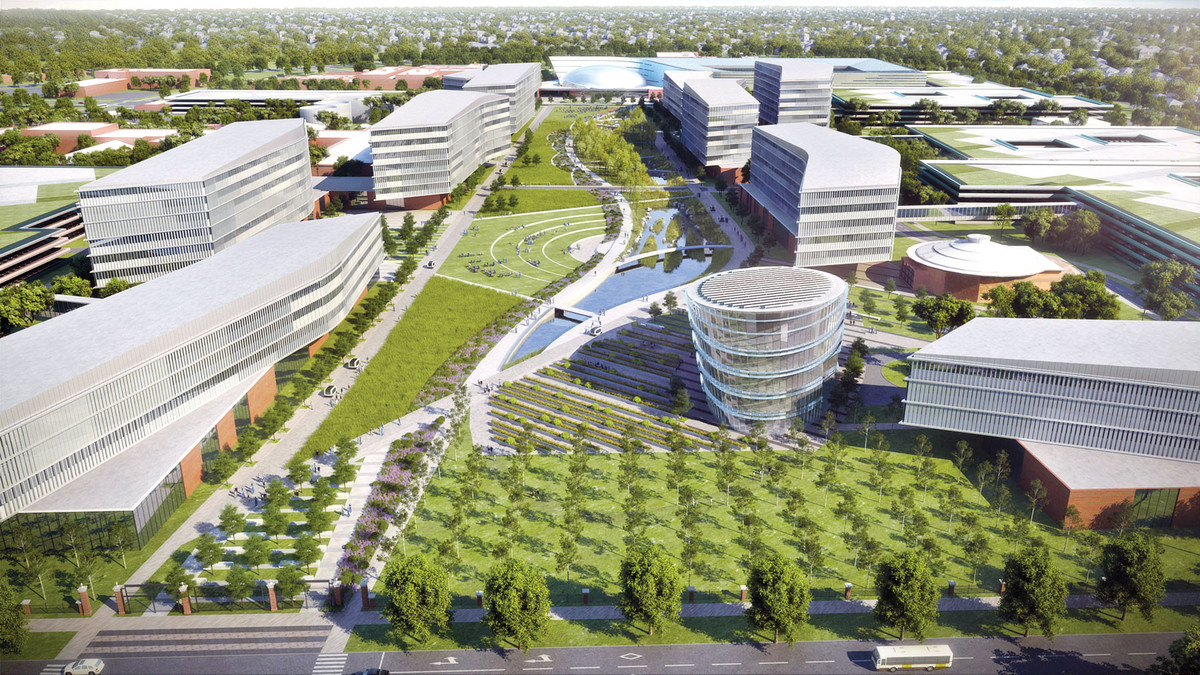
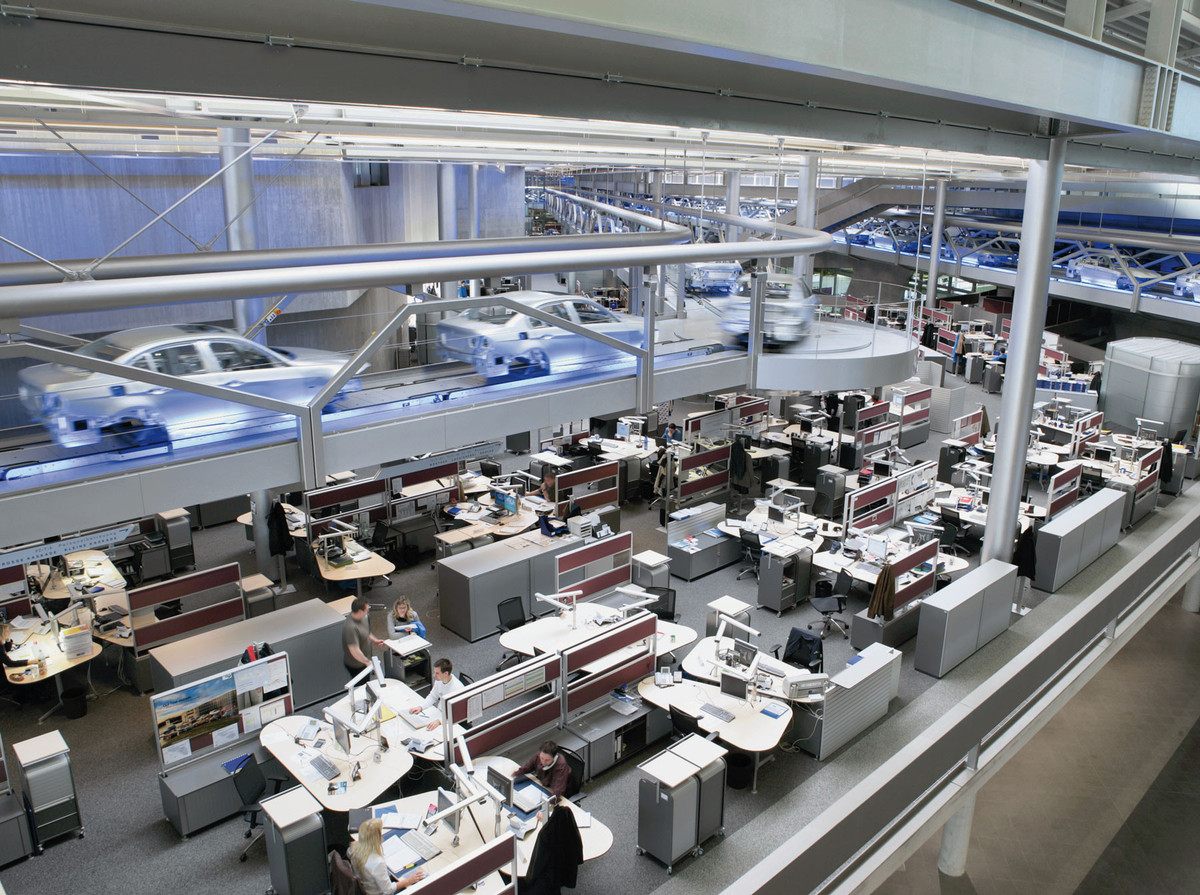
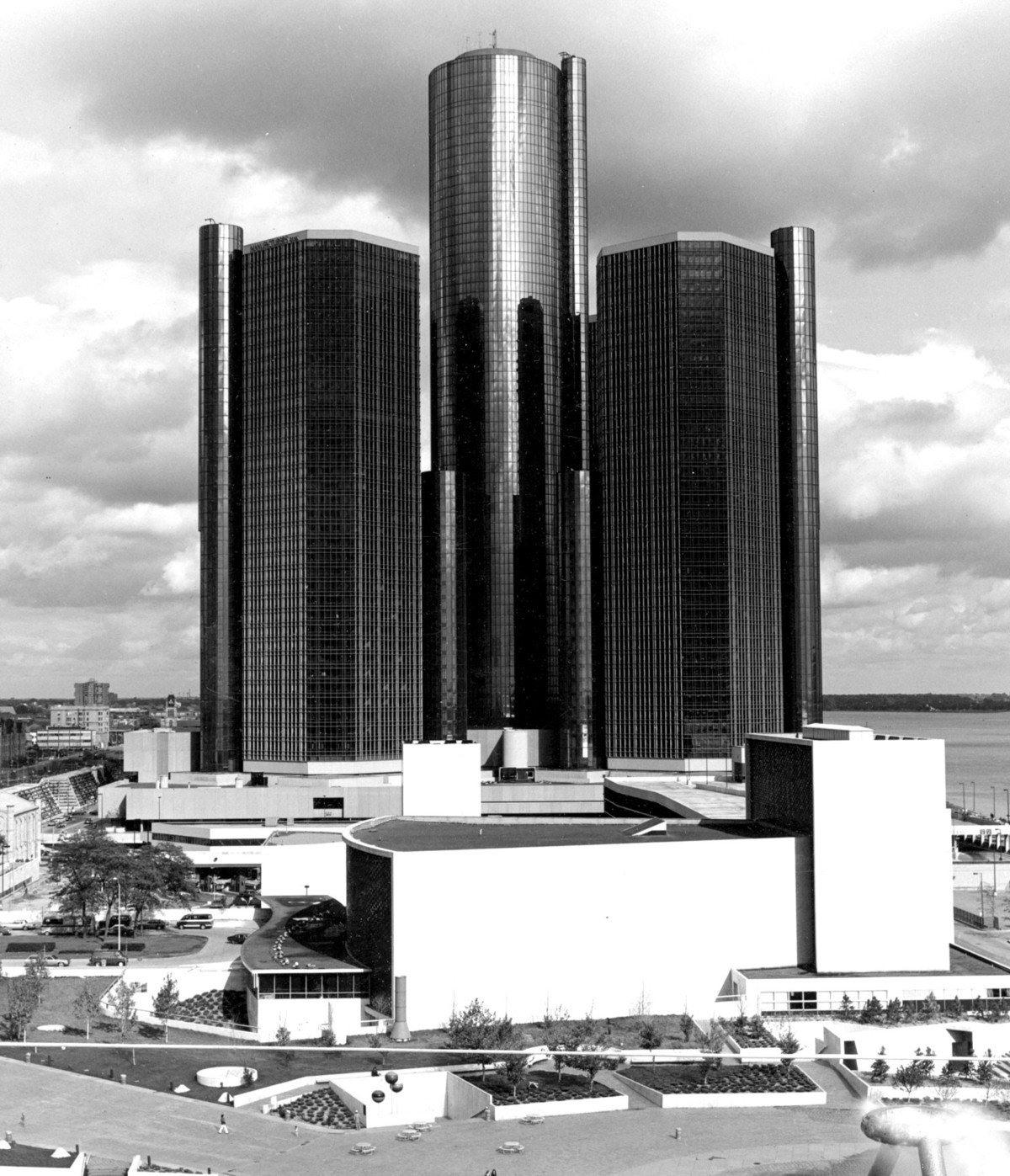
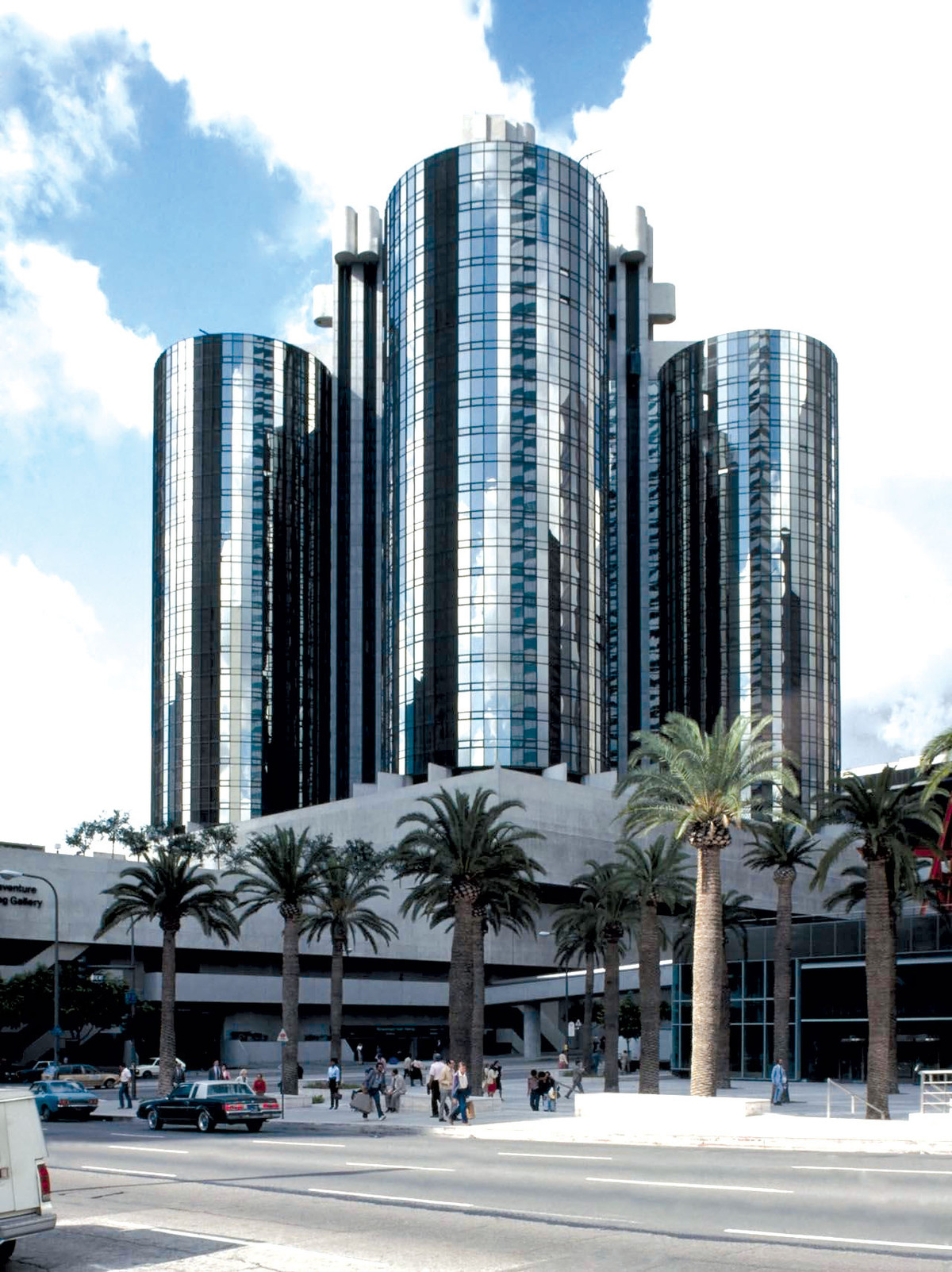
Press, 2014), 157. 4 Ibid., 144. 5 Ibid., 149. 6 Bill Ford Jr., quoted in John Gallagher, “Here’s What You Might Not Know about Corktown’s History,” Detroit Free Press, July 9, 2018, https://www.freep.com/story/money/business/john-gallagher/2018/07/09/detroit-corktown-history/745668002/. 7 Bill Ford Jr., quoted in Daniel Howes, “Ford Depot Move Signals ‘Detroit Is Open for Business,’” Detroit News, June 19, 2018, https://www.detroitnews.com/story/business/columnists/daniel-howes/2018/06/19/ford-depot-bid-backs-regional-case-mobility-hub-detroit-revival/715195002/. 8 Craig Dykers, quoted in Allie Gross, “Architect Behind Corktown Revival Gives First Glimpse of its Future,” Detroit Free Press, June 22, 2018, https://eu.freep.com/story/news/local/michigan/detroit/2018/06/22/craig-dykers-snohetta-ford-corktow…. 9 Ford Motor Company, “Ford Smart Mobility LLC Established To Develop, Invest In Mobility Services; Jim Hackett Named Subsidiary Chairman,” March 11, 2016, https://media.ford.com/content/fordmedia/fna/us/en/news/2016/03/11/ford-smart-mobility-llc-establish…. 10 Ford Motor Company, “Dearborn Campus Transformation,” video, 18:51, April 12, 2016, https://www.youtube.com/watch?v=KVo5WhpI9hI. 11 Ibid. 12 See Douglas Spencer, The Architecture of Neoliberalism: How Contemporary Architecture Became an Instrument of Control and Compliance (London: Bloomsbury, 2016), 84–93. 13 Ford Motor Company, “Ford Motor Company: Acquires Iconic Michigan Central Station with New Vision | Innovation | Ford,” video, 1:45, June 19, 2018, https://www.youtube.com/watch?v=0nLn5vq325o. 14 Harvey, The Condition of Postmodernity. Fredric Jameson, Postmodernism, or, the Cultural Logic of Late Capitalism (Durham, NC: Duke University Press, 1991). The term “post-Fordism” originates in the thought of the “Regulation” school of political economy. See, for example, Michel Aglietta, A Theory of Capitalist Regulation: The US Experience, trans. David Fernbach (London: New Left Books, 1979). 15 Harvey, The Condition of Postmodernity, 145. 16 Jameson, Postmodernism, 47–50. 17 Patrik Schumacher and Christian Rogner, “After Ford,” in Stalking Detroit, eds. Georgia Daskalakis, Charles Waldheim, and Jason Young (Barcelona: Actar, 2001), 48–56. 18 Ibid., in a revised version that appears on Schumacher’s website: https://www.patrikschumacher.com/Texts/AfterFord.htm. 19 Schumacher and Rogner, “After Ford,” 54. 20 Ibid. 21 Ibid., 48. 22 Ibid., 51. 23 The term “new architecture” is employed here in reference to Jeff Kipnis’s essay “Toward a New Architecture,” first published in AD: Folding and Pliancy (London: Academy Editions, 1993). This essay, itself self-consciously recalling the title of Le Corbusier’s Towards a New Architecture (as the first English translation of his Vers une architecture was titled), became a key point of reference for the so-called post-critical and projective architecture of this period. 24 Grandin, Fordlandia, 34. 25 Antonio Gramsci, Selections from the Prison Notebooks of Antonio Gramsci, ed. and trans. Quintin Hoare and Geoffrey Nowell Smith (New York: International Publishers, 1971), 302. 26 John R. Mullin, “Henry Ford and Field and Factory: An Analysis of the Ford Sponsored Village Industries Experiment in Michigan, 1918–1941,” Journal of the American Planning Association 41 (1982). 27 Ibid.
Douglas Spencer is associate professor and director of graduate education at Iowa State University’s Department of Architecture. He is author of The Architecture of Neoliberalism: How Architecture Became an Instrument of Control and Compliance (2016). His work critically theorizes the relationship between architecture, landscape, and the production of subjectivity. His writing has been published in Radical Philosophy, e-flux, New Geographies, and Volume, and in collections such as This Thing Called Theory (2016), Architecture and Feminisms: Ecologies, Economies, Technologies (2017), and Landscape and Agency (2017).
